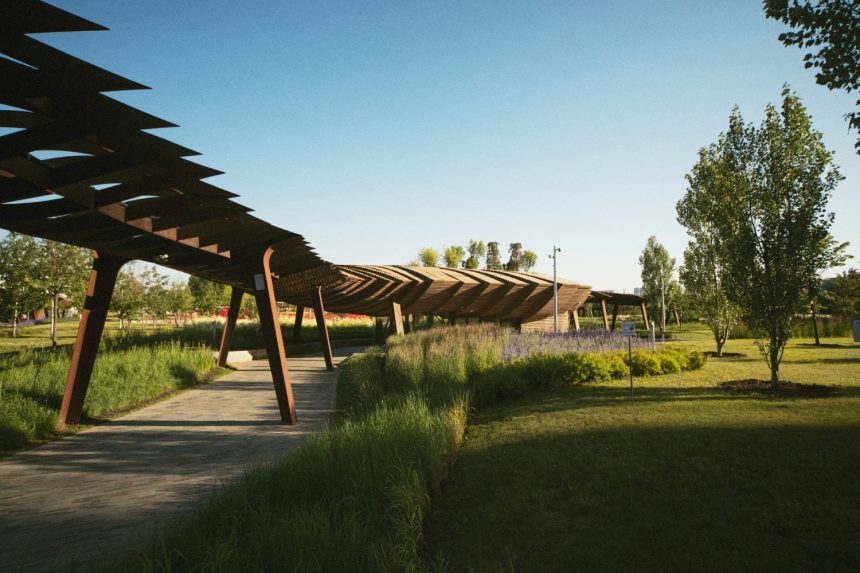Cities are vibrant, dynamic places full of energy, innovation, and opportunity. But let’s be honest—urban environments can also be overwhelming. The noise, pollution, crowded streets, and relentless pace can take a toll on our mental health. That’s where urban green spaces—city parks, community gardens, green roofs, and tree-lined streets—come into play. These green zones aren’t just pretty spots to unwind; they are essential for our mental well-being.
In recent years, scientists have been paying more attention to how access to natural environments within cities affects our mood, stress levels, and overall mental health. Numerous studies have shown that spending time in green spaces can reduce feelings of anxiety and depression, boost our mood, and even improve our cognitive abilities. Imagine taking a quick walk through a city park during lunch—what seems like a simple act can have measurable positive effects on your mental state.
But why do green zones pack such a punch? It turns out that exposure to nature in urban settings helps lower levels of cortisol, commonly known as the stress hormone. When we visit a park or garden, our brains get a break from the constant digital stimulation and noise of city life. Nature encourages mindfulness—being present in the moment—and provides a sense of escape. This feeling of having a safe, peaceful place to breathe and reflect is crucial for mental health.
Furthermore, green spaces foster social interactions. People gather in parks for picnics, sports, or community events, which helps build social bonds and combats loneliness—a common issue in many cities. They also promote physical activity, whether it’s jogging, cycling, or just strolling, which releases endorphins, the body’s natural mood lifters.
Getting outside isn’t just a luxury; it’s a necessity for mental renewal. Even a short visit—like sitting under a tree or admiring flowers—can reduce stress and increase happiness. Recognizing their importance, many cities are now investing in expanding and improving green zones. They see that fostering access to nature isn’t just about aesthetics; it’s about creating healthier, more livable urban environments where residents can thrive mentally and emotionally.
In essence, urban green spaces serve as vital sanctuaries amidst the concrete, acting as places of renewal and mental rejuvenation. As cities continue to grow and develop, integrating and prioritizing these natural environments becomes not just desirable but essential for the well-being of everyone living there.
Designing Cities with Wellness in Mind: How Green Zones Are Shaping the Future of Urban Living and Mental Health Enhancement
Looking ahead, it’s clear that the future of city planning isn’t just about high-rise buildings and infrastructure but also about prioritizing mental health and well-being through thoughtful design. The integration of green zones into urban landscapes is changing the way cities operate, making them healthier and more inviting places to live.
Cities around the world are adopting innovative approaches to incorporate more green areas into their infrastructure. Green roofs—those lush gardens on top of buildings—are becoming more common in dense urban centers. These spaces help insulate buildings, reduce urban heat, and provide residents with visual and physical access to nature. Similarly, pocket parks—small but thoughtfully designed green spaces tucked into neighborhoods—offer quick escapes for busy residents.
Urban planners are now designing cities with wellness in mind by connecting parks and green corridors through pedestrian-friendly pathways and bike lanes. These “green networks” make it easy and inviting for residents to incorporate nature into their daily routines, from cycling to work to weekend family outings. The goal is to create a seamless blend of built and natural environments that enhance physical activity, social interaction, and mental tranquility.
Technology also plays a role. Smart city initiatives incorporate green zones equipped with features like outdoor gym equipment, art installations, and shaded seating areas. These amenities encourage people to spend more time outdoors and foster community engagement. Additionally, green spaces are being designed with accessibility in mind—ensuring that people of all ages and abilities can enjoy them equally.
The benefits go beyond individual well-being; they extend to the health of the entire city. Green zones help mitigate urban heat islands, improve air quality, and moderate noise pollution. They also make neighborhoods more attractive, which can boost local economies and increase community pride.
Furthermore, cities are recognizing that mental health issues are a pressing concern. By weaving green zones into urban fabric, they’re creating environments that support stress reduction, mindfulness, and social bonding. Initiatives like community gardens and urban farms not only provide fresh produce but also serve as therapeutic spaces that promote mental wellness.
As more evidence accumulates on the mental health benefits of green spaces, it’s clear that future city designs will prioritize these areas as essential components of urban living. The outcome? Cities where people feel more connected, calmer, and happier—places that nurture both the body and mind.
In conclusion, creating cities with wellness in mind isn’t just a trend; it’s a vital shift towards sustainable urban living. By investing in green zones, future cities will better support mental health, foster social cohesion, and provide spaces for renewal amid the hustle and bustle. That’s the kind of urban landscape we all want to call home.
End of Article







